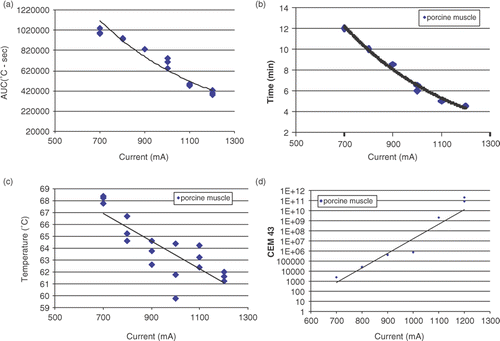Figures & data
Figure 1. Overview of the experimental design. (a) An internally cooled 3 cm RF electrode (arrow) has been inserted into a sample of bovine liver placed in a 0.9% saline bath. The RF generator and a temperature measurement device can be seen in the background. Thermocouple probes (arrowheads) are placed at defined distances (5, 10, 15, and 20 mm diameter from the RF electrode (arrow), so the end temperature at the ablation margin can be registered. (b) In this case coagulation margin (white arrow) extends to the third thermocouple 15 mm from the electrode. Thermal dose represented as area under the curve for the relationship between temperature and time. (c) Representative temperature–time tracings for multiple currents are shown. With higher RF currents the rate of temperature increase was much higher than with lower currents.
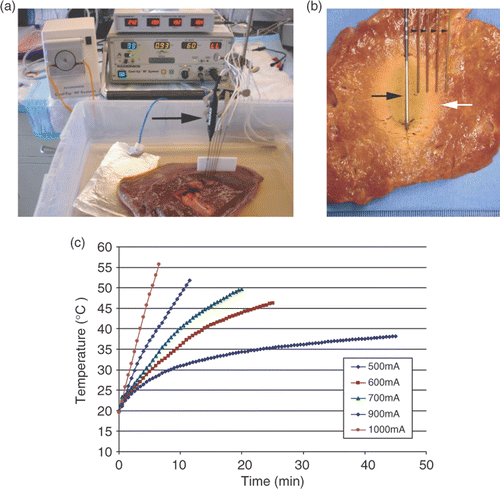
Figure 2. Relationship between duration of RF application and current applied. RF current determined the duration of RF application to achieve specified diameter of coagulation, corresponding with thermal dose requirement in a negative power fashion (p < 0.01). For this and all subsequent figures each trial of the experiments run in triplicate are represented as a data point.
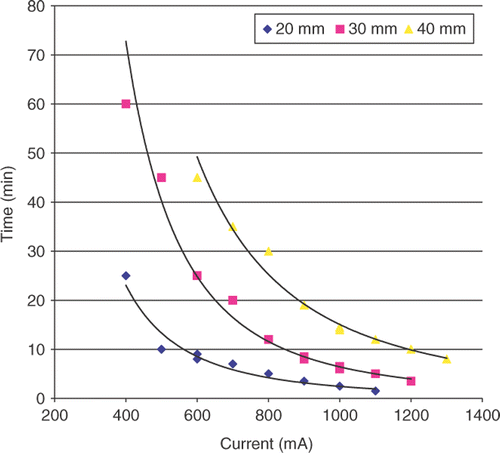
Table I. Summary of the relationships between thermal parameters, distance and current at room temperature for RF coagulation. For all equations ‘x’ represents RF current (mA).
Figure 3. Relationship between AUC and current. Each diameter of coagulation is represented by its own curve (). Statistically significant differences (both for α and β) were seen between three negative exponential functions (p < 0.001).
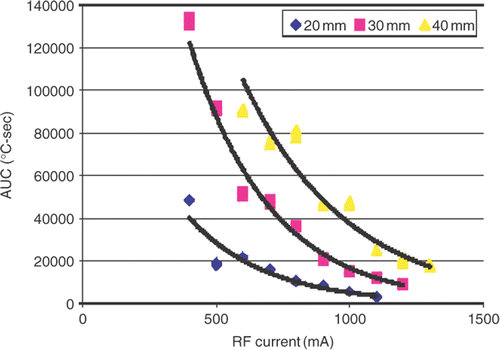
Figure 4. Relationship between the end (i.e. maximum) temperature at the ablation margin and current. All diameters of coagulation showed a range from 33°C to 88°C and correlation with current (global r2 = 0.74; individual r2 = 0.11–0.58).
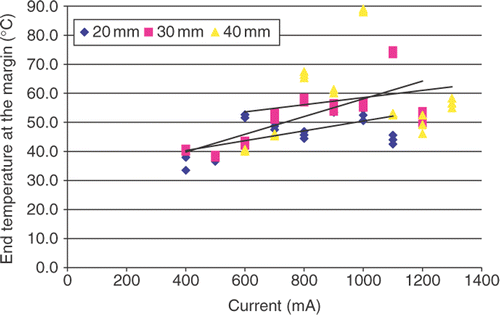
Figure 5. Relationship between cumulative equivalent minutes at 43°C and RF current. Results are shown as ln(CEM43) T bars denote 1 mm calculated error. The values for different energies were not constant, but varied exponentially (see ).
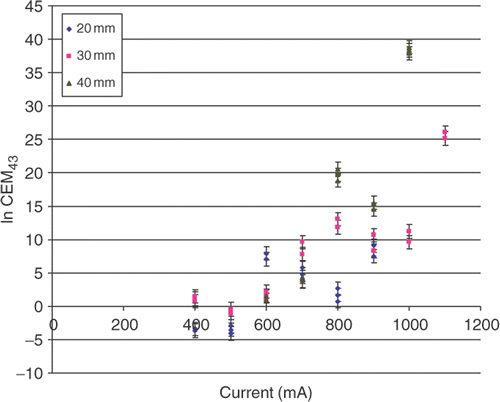
Figure 6. Effect of baseline temperature on thermal dose requirement in ex vivo experiment for DOC of 30 ± 2 mm. (a) Negative exponential relationships of thermal dose and current are presented for three different baseline temperatures. (b) Linear relationships of temperature at the ablation margin and current for three investigated baseline temperatures are presented. Different maximum temperatures are noted. (c) Negative power relationships of duration of RF application and current for three investigated baseline temperatures.
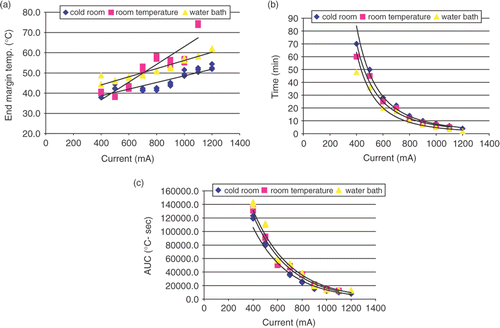
Table II. Summary of relationships between thermal parameters, distance and current at cold-room (8°C) and water-bath (27°C) temperatures for RF coagulation. For all equations ‘x’ represents RF current (mA).
Figure 7. Results of in vivo muscle experiment for DOC of 35 ± 2 mm. (a) Negative exponential relationship of AUC and current (r2 = 0.94). (b) Negative exponential relationship between duration of RF application and current (r2 = 0.98). (c) The range of end temperatures at the ablation margin was lower than in ex vivo experiment (8.6°C vs. 36.7°C). (d) CEM43 vs. current showed wide range of values with exponential correlation (r2 = 0.90).
